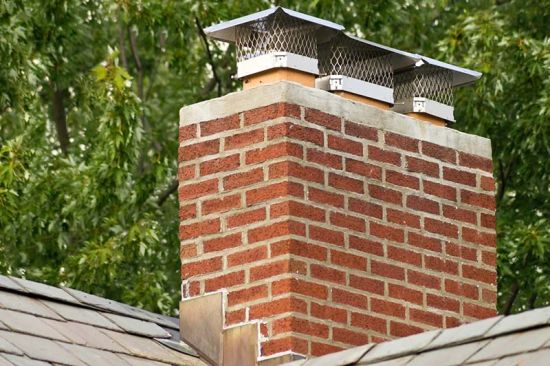Leaks – Your Chimney May Be The Cause…

With the spring warm up in the not too distant future, leaks are an ever looming problem for homeowners. Often, homeowners will contact their local roof repair company in hopes to stop a leak, but don’t be surprised when they refer you out to your local CSIA Certified Chimney Sweep!
Water intrusion is one of your chimney’s worst enemies, and here in north eastern Illinois and south eastern Wisconsin, between the rain and snow, we see a lot of it! Maintaining proper preventative measures, as well as catching any potential leaks early, help to prolong the life of your chimney and can prevent costly repairs down the road. One of the best ways to keep your chimney in tip-top shape is to keep up with your annual chimney safety inspection with a CSIA Certified company.
Pratt's Chimney has decades of experience both preventing and repairing chimney leaks in local area homes. The most common reasons for leaks are as follow:
Do You Have A Chimney Cap?
Often referred to as a rain cap or spark arrestor, the metal cap that sits atop your chimney is one of the first steps to preventing water, debris, and animals from entering your chimney. When your rain cap is missing or damaged, there is nothing stopping the moisture from coming down the chimney and into your firebox. At Pratt’s Chimney, we install stainless steel chimney caps, which help to make sure that the weather we experience does not corrode and rust the caps allowing them to be long lasting tools in preventing damage from outside sources.
Is Your Crown Cracked?
Located at the top of your chimney, you should find a concrete shelf known as the concrete crown. Its job is to protect the chimney and flue underneath. Slightly angled and overhanging by several inches, your chimney crown also helps to wick water away from the brick/masonry underneath. When subjected to freeze/thaw cycles, you will find that the expanding and contracting of the masonry materials will cause cracks in the concrete crown. Often, these cracks start small and, if caught early enough, can be sealed with CrownCoat which helps prevent moisture from entering the brick of the chimney. When these cracks are allowed to continue to expand, you will often notice a leak and even parts of the crown beginning to crumble away.
Bricks & Mortar Deteriorating?
When it comes to your bricks and mortar joints, once cracked they become much more absorbent. Water can seep in through cracks causing a leak on the interior of your chimney as well as further deterioration of the structure of the chimney. When caught early enough, we are often able to tuck-point the chimney, or cut and replace brick. If it goes on long enough, it can eventually lead to needing an entire rebuild of the chimney along with other costly repairs.
Has Your Flashing Pulled Away From The Chimney?
Flashing is located at the base of your chimney, creating the seamless conversion between masonry and roofing. Its purpose is to prevent water from seeping between the chimney and roofing causing unsightly leaks within the home while still allowing the masonry to expand and contract with temperature changes. Many times, after wear and tear from the elements, said flashing will pull away from the chimney masonry. Often, if it is not yet at the point of needing to be completely replaced, we are able to seal the flashing to help prevent or stop leaks.
Preventative Maintenance
The most important preventive maintenance for leaks is waterproofing (sealing) the brick. We use a sealant manufactured by ChimneySaver. ChimneySaver is a water based sealant that is warrantied for TEN YEARS! If you have never had your chimney waterproofed, give us a call. It will be the most important spring-leak maintenance you can have done.

